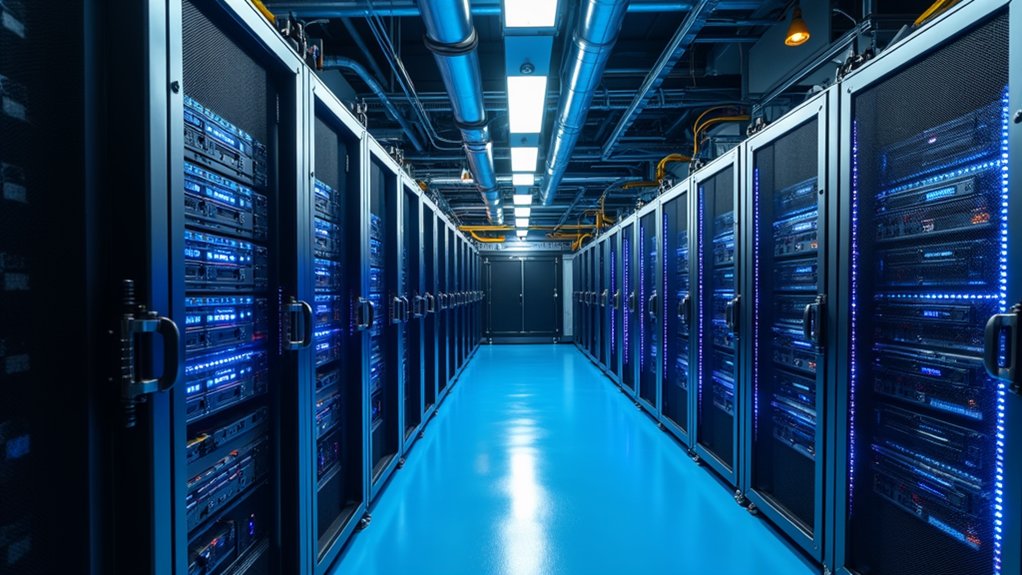Establishing a cryptocurrency mining operation requires substantial initial investment in specialized hardware, whether ASIC miners for Bitcoin or GPU arrays for alternative coins. Profitability hinges on electricity costs, hardware efficiency, and market conditions, with mining pools offering more consistent returns compared to solo mining. Prospective operators must conduct thorough feasibility analyses, addressing legal structures, cooling requirements, and noise management while maintaining vigilance regarding regulatory developments. An all-encompassing business plan that accounts for difficulty adjustments and equipment obsolescence will shed light on the pathway to sustainable mining operations.

While cryptocurrency mining presents a potentially lucrative avenue for entrepreneurs seeking entry into the digital assets space, establishing a viable mining operation necessitates meticulous planning, substantial capital investment, and technical acumen.
Prospective miners must conduct thorough feasibility analyses, considering the significant upfront costs associated with acquiring specialized hardware, including ASIC miners for Bitcoin or GPU setups for altcoins like Ethereum and Kaspa, alongside ongoing operational expenses dominated by electricity consumption and cooling requirements.
Hardware selection represents a critical decision point, with ASIC miners offering superior efficiency but at premium price points that often exceed $10,000 per unit, whereas GPU mining provides greater flexibility and moderate entry costs for those targeting alternative cryptocurrencies. GPU mining is particularly cost-effective option for beginners who want to start mining without massive initial investments.
The operational environment must accommodate noise management solutions, particularly for ASIC-based operations that generate considerable sound and heat, requiring dedicated spaces with adequate ventilation systems to prevent premature hardware degradation and maintain peak performance metrics.
Participation in mining pools has emerged as the predominant strategy for small to medium-scale operators seeking consistent revenue streams, because these collaborative structures distribute rewards proportionally to contributed computational power, mitigating the fundamental volatility of solo mining ventures. Mining pools offer the advantage of diversifying investment portfolios beyond traditional cryptocurrency holdings while providing more predictable returns.
Established pools like Acheron and Nicehash offer varying fee structures and payout mechanisms that warrant careful evaluation to maximize profitability while contributing to network decentralization.
Cloud mining alternatives present an accessible entry point for those lacking technical expertise or capital for hardware acquisition, though this model introduces counterparty risks that necessitate thorough due diligence regarding provider legitimacy and contractual terms.
Successful mining operations invariably develop extensive business plans delineating clear objectives, detailed budget allocations, and robust risk management strategies addressing market volatility, regulatory developments, and equipment obsolescence.
Legal considerations cannot be overlooked, with prudent operators establishing appropriate business structures such as LLCs to manage liability exposure and facilitate transparent tax reporting through specialized accounting tools like CoinLedger.
Ultimately, cryptocurrency mining ventures require continuous adaptation to evolving market conditions, network difficulty adjustments, and regulatory frameworks to maintain profitability and operational sustainability in this dynamic sector.
The increasing adoption of cryptocurrencies by approximately 617 million people globally creates an expanding market for mining operations that can effectively contribute to transaction validation while capturing newly minted coins.
Frequently Asked Questions
What Cooling Systems Are Most Efficient for Large Mining Operations?
Immersion cooling systems represent the most effective solution for large-scale mining operations, delivering 1000x better heat transfer than conventional air cooling while enabling 25% higher hash rates and 50% improved ASIC performance.
Closed-loop configurations, particularly modular PRO9/PRO10 systems supporting 48kW to 256kW cooling per enclosure, maintain ideal operating temperatures below 32°C, which greatly reduces energy consumption and protects valuable hardware from thermal damage.
How Do I Legally Structure My Crypto Mining Business?
A legally sound crypto mining operation typically benefits from an LLC structure, which provides liability protection while maintaining tax flexibility through pass-through status.
Entities must secure appropriate money transmission licenses where required by state law, register with FinCEN if classified as a money services business, and implement robust AML/KYC protocols.
Multi-entity structures, incorporating holding companies and operational subsidiaries, may offer enhanced asset protection, particularly in jurisdictions with favorable regulatory environments like Wyoming, Texas, or Florida.
When Should I Sell Mined Coins vs. Holding Them?
Miners should sell mined coins during sideways markets to cover operational expenses, particularly when electricity costs exceed $1,533/year per ASIC miner.
Additionally, implementing strategic sales approximately 20 days pre-halving can help fund equipment upgrades.
Conversely, holding proves ideal during bear markets, where mining functions as dollar-cost averaging with daily accumulation regardless of price action.
A balanced approach, utilizing collateralized BTC loans for liquidity needs without sacrificing positions, typically outperforms pure holding strategies in 35% of historical scenarios over three-year periods.
How Do Mining Pools Affect Profitability Compared to Solo Mining?
Mining pools offer consistent, predictable rewards with lower entry barriers, enabling miners to receive regular, smaller payments proportionate to their contributed hash power.
In contrast, solo mining requires substantial computational resources and presents higher variance, where miners may wait extended periods before securing full block rewards.
While pools charge fees (typically 1-3%), their reduced operational costs and income stability generally outweigh these expenses, particularly for miners with limited resources or risk tolerance.
What Insurance Options Protect Mining Equipment Investments?
Mining equipment investments can be protected through several insurance options, including property coverage for hardware and facilities, business income interruption coverage for operational expenses during downtime, and liability coverage for third-party claims.
Specialized policies, which exclude cryptocurrency value volatility, should utilize replacement cost valuation rather than actual cash value to avoid depreciation gaps.
All-risk policies represent the best choice, though miners must carefully examine exclusions related to floods, earthquakes, and cyber risks.









